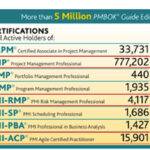Executives in Virtual Roles: How Great Leaders are Going Digital

When employees move to remote positions, this can be challenging enough. But what about when managers and executives move to virtual roles as well? How does that impact the productivity and effectiveness of the team? Does it change how employees and managers connect?
According to Tom Peters, The Red Bull of Management Thinkers, “The simple act of paying positive attention to people has a great deal to do with productivity.” Remote working certainly poses challenges for employees and managers alike but as virtual meetings replace in person conversations, the role and responsibilities of great leaders also changes.
In an office environment, it is easy for employees to step into an office, close the door and have a heart to heart conversation about the status of their jobs, the performance, and the tasks at hand. However, when employee and manager are both working remotely, these conversations may be strained, less comfortable or even difficult to schedule. Of course, there is also the comfort level or lack thereof, of the use of technology to have a “face to face” conversation. Body language, eye contact and emotions are much more difficult to read over the phone or via video conferencing, making the communication in some cases, less than ideal.
However, as more and more employees take on virtual roles, managers and executives must learn their responsibilities in the new virtual environment to ensure that they effectively and efficiently communicate with their employees and continue to develop those relationships that will be productive. Simon Sinek, author of Leaders Eat Last, shares that great leaders “have the resilience to thrive in an ever-changing world.” What is changing? Everything!
So, what do great leaders who are going digital along with their teams need to do?
Melissa Raffoni shares in the Harvard Business Review the following areas that virtual leaders need to focus:
- Strategic communication. When communicating virtually, it is important that the time online be used efficiently and effectively. Leaders should strategically plan what the context and purpose of the meeting, the audience, specific objectives, desired outcome, agenda and the amount of time allotted to each topic. Since it is difficult to read emotions during these types of calls, it is important that the strategy allow time for check-ins to ensure that everyone fully understands as well as for questions related to the subject.
- Best practices. While it may have been best practice to have a weekly in person meeting to touch base, it may not be feasible to conduct a weekly video conference meeting in the same way. Depending on personalities and preferences of your team members, you may need to conduct smaller meetings with direct reports on a more frequent basis and larger group meetings less frequently. Communication methods may even change to weekly email communication with less important or relevant information. In other words, your communication style and method that worked previously may no longer be a best practice in the new virtual environment.
- Roles and responsibilities. As your team members become more accustomed to their virtual roles, it may become apparent that some have differing skillsets. Roles and responsibilities may have to be changed to accommodate one person’s strengths with another’s weaknesses to ensure the efficiency and productivity of your team as a whole.
- Keep your eye on the prize. While it may be tempting to focus on simply the tasks at hand and getting used to the virtual role may be time-consuming, it is important for every great leader to continue to keep their eye on the prize. What is the end goal? What are you and your team trying to achieve? How do you need to strategically position your department and the company for success?
- As important as getting the job done is to the success of the company, maintaining connections with your team on another level is critical. Employees may feel isolated and insecure in their remote role which can translate to a lack of motivation and loss of productivity. Aside from scheduled, strategic communication, executives should keep their finger on the pulse of employees, inquiring about their well-being, encouraging participation in group discussions, sharing their own visions for the company and their ambitions for their personal development. Keeping connecting will enable employees to feel comfortable when they do need to speak privately or are faced with challenges that they may not have otherwise had to deal with in an in-office environment.
A sign of a great leader is how they are able to adapt in varying situations and what they learn that can be utilized along the way. Whether working in a virtual role is only temporary or permanent, executives and managers should use this opportunity to enhance their communication skills, improve their relationships with team members, and continue to strive for effective and efficient teams.



